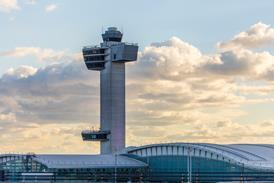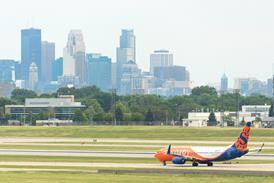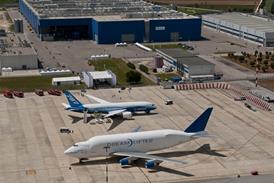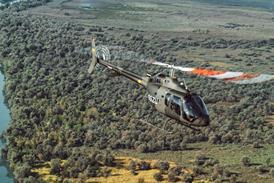
From the inner workings of an airport and the surrounding airspace to passenger data and the information going back and forth from the flight deck to the airline operations center, the connected aviation ecosystem runs on data.
The continuous flow of data is vital for driving progress in aviation. Technologies like machine learning and predictive analytics play a crucial role and enable experts to collect, monitor, and analyze vast amounts of aviation data worldwide. The power lies not just in the data itself, but in its analysis.
Understanding the meaning behind data is essential for achieving faster, more fuel-efficient routes; reduced cancellations and delays; operational improvements; increased passenger satisfaction and loyalty; more efficient airspace utilization and cheaper flights.
“Data & analytics allow us to deliver the right information to the right stakeholder at the right time, ensuring the best flying experience possible,” said Jennifer Schopfer, president of Connected Aviation Solutions for Collins Aerospace. “By harnessing and analyzing data, we can unlock valuable insights, enable better decision making and drive innovation faster than ever before.”
The power to analyze is a way to unlock huge benefits throughout the entire aviation ecosystem. There are numerous enablement solutions such as sensors, onboard hardware and connectivity products embedded in aircraft, passenger apps, and more, that gather and store data. Algorithms and other specialized software analyze data making it easier to identify trends, patterns and potential challenges throughout aviation.
More positive passenger experiences at airports
Wouldn’t it be great if gate changes weren’t so far away from where your plane lands? Or planes didn’t have to wait on the tarmac for ground or gate crews? What if a single baggage carousel wasn’t flooded with passengers from three different flights at one time? For decades, passengers have been longing for solutions to these problems and air travel free of delays and disruptions. With the power to predict, analyze and optimize, passengers are closer to seeing this become more of a reality.
Using tools like Collins’ AirPlan™, airports can receive data from multiple points within the operations environment through a single application, allowing them to quickly and easily move staff, deploy ground crews and complete flight check-ins, among other tasks.
Specifically, data analysis can reveal:
- Passenger flow and behavior data help optimize airport throughput, reducing queue times. For example, biometric technology is driving up to 30% faster aircraft boarding times.1
- Flight data, especially when combined with FlightAware ForesightSM, improves data accuracy for better aircraft turnaround times, lowers operating costs and allows for more sustainable flights.
- Baggage tracking data improves the handling process, reducing the number of lost or damaged bags.
- Maintenance and resource data helps airports monitor the condition of airport infrastructure, equipment, electricity and water usage for facility and sustainability improvements.
- Cloud-based solutions, like cMUSE, save airports money and reduce carbon output by allowing airlines to share a common, agent-assisted check-in desk. An airport could save more than $100k by switching from core server hardware to cloud-based solutions.2
Reduced cancellations and delays, improved flight tracking
Whether it’s predictive maintenance tools like Ascentia®, aircraft interface devices like InteliSight™ Aircraft Interface Device (AID), or flight tracking solutions like OpsCoreTM, airlines and business jet operators around the world are taking advantage of what data has to offer. Why? Because of the enormous and untapped benefits data analysis brings to the connected aviation ecosystem.
With Ascentia, real-time analytics can help operators identify patterns and indicators of potential failures. An easy-to-use dashboard also helps aircraft engineers create custom alerts‒ with complex and advanced logic‒ in a low code/no code environment.
“Collins will release later this year Analytics Developer Studio, a tool within Ascentia that will analyze full flight data for patterns and shifts in performance,” said Schopfer. “If a shift is found, correlations to part replacements are made, resulting in a curated list of insights that airlines can use to develop further alerting. With this tool, airlines can spend less time reviewing data and more time actioning it.”
Having the power to analyze means airlines can potentially reduce 30% of maintenance-driven delays and cancellations and also save up to 20% of their maintenance costs by using Ascentia.
InteliSight AID on the other hand captures, records, stores, encrypts and securely sends aircraft data to Collins’ robust and secure ground platform, GlobalConnectSM, which manages the various airline data streams and automates the acquisition of safety and performance data from the aircraft. Where the process used to be manual, InteliSight and GlobalConnect now automate data collection. Airlines are using these systems in multiple ways, but the key is using the analyzed data in predictive models to make fleets more efficient and environmentally sustainable.
Real-time data is key in today’s high-demand travel environment to ensure flight operations can precisely track flights anywhere within the airspace and be alerted to conditions in the air or on the ground that might cause costly flight deviations and unpleasant passenger experiences. OpsCore Flight Tracking pairs advanced data aggregation and predictive technology from FlightAware with Collins’ connected messaging and fleet management capabilities, enabling airlines to analyze flight information through machine learning, to identify key influencing factors for any flight to forecast future events in real-time and optimize ground resources.
Faster flight plans and less fuel burn in business aviation
Business aviation has long been criticized for having more carbon footprint per passenger than commercial flights. But with data analysis, the environmental impact of private flights can be reduced. Operators can assess their carbon footprint, track emissions and make adjustments to lower their overall contribution to climate change.
Collins’ Next Gen Flight Planning solution benefits business aviation by enhancing flight planning time, such as the time it takes to select a route and factor in weather and airspace restrictions, and leveraging cost indexing, which improves fuel burn. Using advanced algorithms, the solution harnesses data from various endpoints, including altitude, runway closures, weather, airport closures, and Notice to Air Missions (NOTAMS)‒recommending faster and more sustainable travel paths.
“There’s a huge opportunity for analytics to transform business aviation,” said Schopfer. “Data can make business aviation more efficient, sustainable and customer-centric by enabling operators to make more informed decisions that not only reduce operating costs and improve the environment, but also benefit customers in more personalized ways.”
Safer skies and more on-time flights
Real-time data analysis is becoming more crucial as air traffic in the United States returns (and has even exceeded) pre-pandemic levels at the nation’s busiest airports. And with Machine Learning‒ backed by years of recorded air traffic data‒ ensuring safe operations, efficiently utilizing air space and managing the impact of inclement weather and high-congestion days are a few ways air traffic controllers are benefitting from data analysis. For more than 70 years, Collins’ air traffic team has been producing systems that gather data and alert controllers to potential air space conflicts.
But how do passengers benefit from data analysis within air traffic management? It starts by recognizing how common issues like closed runways, ground-based navigation device outages and weather can impact a flight’s on-time departure or arrival. Through data analysis, Collins is tackling these issues and helping air traffic controllers optimize flight plans for more flexible and efficient routes to be communicated directly to the aircraft and operations centers. These advancements aid controllers in keeping the skies safe and flights on time.
“Airlines, airports and airspace management rely on each other to enable the aviation industry, yet the data and systems throughout the ecosystem can be siloed,” said Schopfer. “The key is to get the data, analyze the data and turn it into valuable insights. At Collins, we offer a full stack of solutions that can be stand-alone products or integrated solutions depending on what the customer’s specific needs are, to deliver more data-driven decision-making across the entire industry.”























